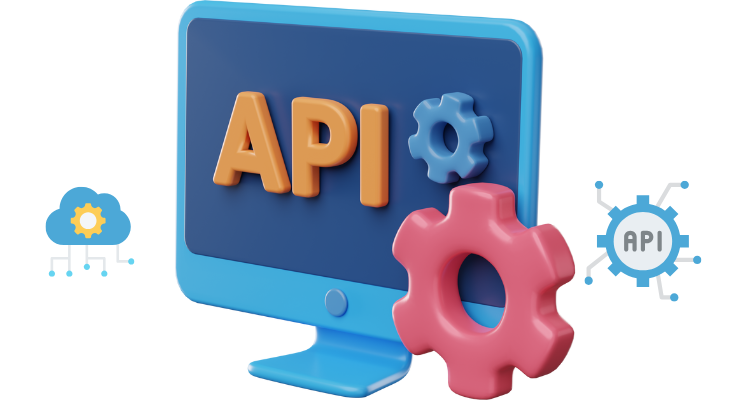When Netflix debuts a new series to millions worldwide or Salesforce simultaneously processes API requests from thousands of enterprise clients, what makes that possible is more than just clever coding.
Behind the user interface lies a robust, distributed architecture that resists failure, scales on demand, and keeps services online—regardless of regional outages or traffic spikes. At the core of this digital choreography is proxy load balancing.
Modern enterprises are rapidly moving from monolithic systems toward distributed microservices and cloud-native stacks. This transition demands high resiliency and performance, especially for APIs, which have become business-critical rather than just backend operations.
Ensuring these APIs remain up and running is no longer optional—it’s a key factor in digital business survival.
Table of Contents
ToggleWhy Resilience is Essential in API Infrastructure

API resilience refers to how well a system continues functioning amid component failures, infrastructure changes, or user load surges. In a digital-first world, even brief downtime can be catastrophic.
IBM reports that average downtime costs have soared to approximately $5,600 per minute, particularly for mission-critical applications in sectors like finance, healthcare, and SaaS.
Despite the best efforts of DevOps teams, system failures still occur. According to a 2023 Cloudflare study, around 87% of major outages in enterprise environments could have been either entirely avoided or significantly minimized with a well-executed load-balancing and redundancy strategy.
Proxy Load Balancing: The Resilience Backbone
To prevent single points of failure (SPOF), enterprises implement proxy load balancers that act as intermediaries between users and server infrastructure. These proxies do more than just route traffic—they actively monitor the health of downstream services, reroute traffic when an instance fails, enforce authentication policies, and scale resources as needed.
Popular tools like NGINX, Envoy, and HAProxy—alongside cloud-native solutions such as AWS Elastic Load Balancer and Azure Front Door—offer high-availability capabilities in production environments.
Netflix exemplifies this architecture by using Envoy-based service proxies with built-in features like circuit breaking, retries, and monitoring, maintaining service continuity even under pressure.
The Emerging Need for Multi-Region and Multi-Cloud Redundancy

As applications scale globally and user bases spread across geographies, single-region deployment strategies have become obsolete.
Enterprises are adopting multi-region, active-active proxy load balancing to distribute workloads and implement seamless failover strategies. Salesforce, for instance, reduced downtime by over 75% by transitioning to a multi-region proxy setup.
The broader market reflects this trend. The global API management market was valued at $4.5 billion in 2022 and is projected to surpass $10 billion by 2027.
Similarly, the market for application delivery controller software, including advanced proxy systems, is expected to exceed $5 billion by 2026. This explosive growth highlights the increasing importance of reliable, resilient API infrastructures.
Smart Load Balancing with Service Mesh and AI
Service mesh technologies such as Istio and Linkerd offer developers deeper control with minimal overhead. These tools handle complex load-balancing logic, implement retry policies, and provide observability features like distributed tracing and telemetry, which are crucial for debugging microservice interactions.
Artificial intelligence is also enhancing this space. Through machine learning, next-generation proxies can predict traffic surges, make data-driven routing decisions, and adjust configurations in real time.
Gartner predicts that by 2025, more than 80% of cloud-native applications will rely heavily on service mesh and proxy-based infrastructure to maintain resilience.
Performance, Security, and Cost Optimization on the Edge
Today’s proxy load balancers extend their functionality to the edge. In hybrid and edge computing environments, proxies enforce geo-location policies, ensure data residency compliance, and optimize latency by directing user requests to the nearest data center.
Security remains a key function. Modern proxies offer advanced TLS termination, integrate with Web Application Firewalls (WAFs), and enforce robust API security mechanisms such as rate limiting, OAuth token validation, and user identity verification.
However, building such globally distributed and redundant systems incurs costs. Many enterprises mitigate this by implementing automated scaling policies and orchestration tools. As a result, organizations can achieve up to 25% cost savings by dynamically adjusting resource availability during off-peak periods.
Strategic Deployment: Learning from Industry Leaders
Real-world tech giants provide successful blueprints for resilient proxy deployment:
Netflix has mastered distributed architecture through the integration of smart proxies that reroute traffic during service degradation without impacting user sessions.
LinkedIn transitioned from legacy load balancers to cloud-native, Envoy-based proxies to reduce outages during deployments. This shift led to a 30% reduction in service incident rates, according to TechCrunch (2023).
Salesforce leveraged multi-region load balancing to eliminate single points of failure and enhance user experience during high-traffic events.
These strategies provide more than just improved uptime—they boost brand credibility and protect revenue streams.
Making the Right Proxy Choice for Your Stack
Designing a resilient API architecture starts with selecting the right tool for your needs. Whether choosing an open-source proxy like HAProxy or a cloud-managed API gateway, the decision should be guided by traffic profiles, scalability targets, compliance mandates, and latency sensitivities.
Organizations operating in or near private or regulated data facilities should prioritize selecting the best datacenter proxy to ensure reliable IP diversity, stable throughput, and reduced risk—particularly when handling legacy API traffic or region-specific requirements.
Conclusion: Resilience is the New Baseline
Proxy load balancing has moved from a backend optimization to a frontline defense against failures, downtime, and data loss. As user expectations rise and digital systems become more interconnected, agility and redundancy shift from luxury to necessity.
Proxy load balancing provides the infrastructure intelligence needed to maintain availability, enforce security, and scale operations dynamically. For CTOs, developers, and architects, the message is clear: build for failure, and in doing so, build for success.
Because in the age of distributed systems, it’s not the strongest who thrive—but those most resilient to disruption.









